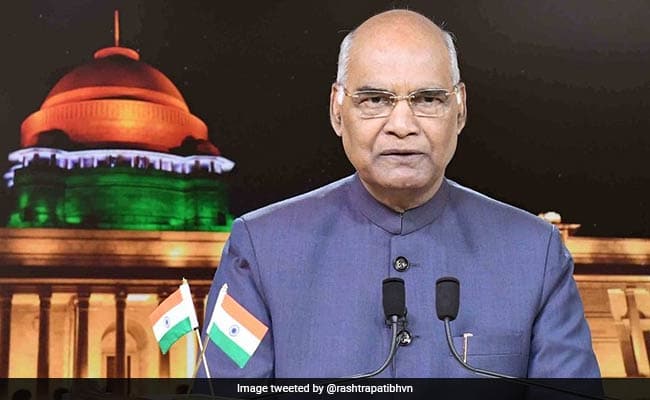How Is The President Of India Elected And What Are His Duties?
by Mashum Mollah How to Guides Published on: 17 April 2019 Last Updated on: 18 October 2024

The President of India is the figurehead in the constitutional structure of the government of India. The present President of India is Ram NathKovind. He is the present serving President of the democracy of India.
There is an extensive method of the election of the President of India, and he or she also has several crucial and integral duties and responsibilities towards the state. If you are not aware of Bharat ke rashtrapati kaun hai then you should know that it is Ram NathKovind. Here are the various steps in the election of the President of India. Below is also a list of the duties of the President of India.
Steps for the Election of the President of India:
The election of the President of India is not the same as the other MLA and Prime Minister elections. This is done in several steps and techniques. Here are some of the major steps in the election process of the President of India.
1. Nominating Process:
Every competitor considering a keep running for India’s President’s office should record their assignments by a specific date. The hopefuls were likewise required to gather over INR Fifteen thousand as store and present a marked rundown of about fifty proposers and also fifty seconders. A balloter can just propose or may even second one applicant’s name. This standard of getting balloters to propose and second an individual’s candidature was received in 1974 after the Election Commission understood that in 1952, 1957, 1962, 1967 and 1969 surveys, a few competitors presented their names although they didn’t have “even a remote possibility of getting chose.
2. Casting a Ballot:
All chosen MLAs, in their separate state and association domain capitals, and every single chosen MP, at Parliament, are given ticket papers to make their choice. They will likewise be given different pens, which is the main instrument they can use to record their votes. Each poll paper will contain the name of all competitors who are challenging the Presidential race. The voters will continue to demonstrate their inclination for every competitor – checking one for the applicant they most lean toward as President, two for the hopeful who is their second inclination, etc. A balloter isn’t required to check inclinations for every Presidential applicant. He/she needs to just stamp their first inclination for their vote to be considered in the decision.
3. Separating Ballot Papers:
The Returning Office confirms all polls and starts the checking procedure utilizing the legitimate tickets. The ticket papers will be taken up state-wise and assigned to every competitor’s plate contingent upon whose name shows up as the principal inclination. At that point, the tickets papers of the Members of Parliament are comparatively appropriated.
4. Tallying Votes:
The absolute number of votes that a Presidential applicant accumulates is determined by including the estimation of the considerable number of tallies in which a specific competitor gets the first inclination. Keep in mind, the estimation of each poll paper relies upon who makes the votes. The estimation of the ticket paper of any MP (from LokSabha or RajyaSabha) is 708. Including the estimation of each ticket paper that is in a competitor’s plate gives the complete number of voters surveyed for that hopeful.
5. Choosing the Winner:
The champ of the race for being the President isn’t the individual who gets the most number of votes, yet the individual who gets a larger number of votes than a specific amount. The portion is chosen by including the votes surveyed for every competitor, separating the whole by 2 and adding one to the remainder. The hopeful who surveys a bigger number of votes than the statement is the victor. On the off chance that nobody gets a bigger number of votes than the standard, at that point, the competitor with the most reduced number of votes is wiped out.
6. Making Vow:
Few days after the old president demits office, the President-elect will make a vow. Note that past president can leave office if someone else is prepared to have his spot. For an unexpected reason, if there is no one to accept the workplace of President of India on the date, the past president will keep on staying in office. The Chief Justice of India normally regulates the promise for President.
Duties of the President in India:
The President of India is a figurehead of the country’s parliament. That, however, doesn’t mean that they are not entirely a puppet. There are several responsibilities and the duties of a President in India.
1) The verdict of Death Sentences – The President of India has the power to decide on the verdict of a life and death sentence.
2) Assigning of Members of the Parliament – The President of India assigns people like the Attorney General, governors of States, Chief Election Commissioner, Chief Justice, as well as Ambassadors.
3) Indian Armed Force – He or she is considered as the commander of the Indian Armed Forces.
4) Command and Postpone Parliament – The houses of the Parliament can be commanded or postponed by the President of India.
5) Dissolve LokSabha – The President of India has the power to dissolve the LokSabha as and when he or she thinks that it is required.
6) Passing Laws – The bills passed by the houses of the Parliament are signed by the President of India to turn the bills into laws.
7) Declaring an Emergency – The President of India has the power to declare the three kinds of emergencies of the state. They are the national emergency, financial emergency, and the state emergency.
These are the various duties and responsibilities of the president of India. Without the President, there would be a lot of gaps and loopholes in the constitutional procedures of the Parliament.
Read Also:



































































































